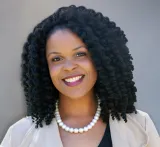Breaking Barriers: Advancing Literacy Through Equity and Action

Dyslexia is not the barrier—it’s an opportunity
to innovate, adapt, and advocate
for better teaching practices.
Equity in education isn’t just a goal—it’s a necessity. Literacy, often referred to as the foundation of all learning, is the key to unlocking every student’s potential. Yet, for many learners, systemic barriers, undiagnosed challenges like dyslexia, and biases—conscious or unconscious—can stand in the way of their success. These barriers can feel insurmountable for students, educators, and families alike. As educators, administrators, and advocates, we all have a role to play in advancing literacy for every learner.
The Science of Reading: A Foundation for Equity
At the heart of effective reading instruction lies the science of reading—a body of research that shows how the brain learns to read and how educators can support that process. While this knowledge has transformed the way we approach literacy, its potential to close equity gaps often goes untapped. Too many students, particularly those from marginalized communities, don’t receive the systematic, explicit instruction they need to thrive.
The science of reading provides a road map for equitable instruction, especially when it comes to supporting students with dyslexia. The intersection of these principles with real-world classroom practices offers opportunities to ensure all students, regardless of their background, have access to high-quality instruction.
Dyslexia and the Challenges of Accessible Learning
Dyslexia is an often misunderstood and misdiagnosed challenge in education. Many students with dyslexia go through their school years undiagnosed or unsupported, leading to frustration, anxiety, and a persistent sense of failure. For these students, learning to read often feels like climbing an uphill battle, with barriers at every turn. This struggle is compounded by a lack of understanding among educators, parents, and even policymakers about what dyslexia is and how it manifests.
But dyslexia isn’t a barrier to learning—our response to it is often the issue. It requires a call to action. It challenges us as educators to adapt our approaches to meet the diverse needs of all learners. By recognizing the complexities of dyslexia and implementing evidence-based practices, we can ensure students with dyslexia receive the support they need to thrive.
Dyslexia often goes unnoticed or is misinterpreted as a lack of effort, behavioral issues, or general academic difficulty. This is particularly true in early grades when students may use compensatory strategies to mask their struggles. Without proper screening tools or trained educators, many students slip through the cracks, leading to delayed identification and intervention.
Additionally, systemic inequities play a role. In under-resourced schools, where teachers may lack access to professional development or diagnostic tools, students from marginalized communities are even less likely to be identified and supported. This highlights the urgent need for equitable screening and intervention practices in all schools. These are the barriers to addressing dyslexia.
Bias and Barriers: A Call for Reflection and Action
Equity in literacy isn’t just about delivering the right instruction; it’s also about addressing the biases—both individual and systemic—that shape our classrooms and schools. Biases can influence everything from how we assess students’ abilities to the resources we allocate. They can also create invisible barriers that prevent students from reaching their full potential.
Encouraging educators and administrators to reflect on these biases and take actionable steps to dismantle them is critical. Whether it’s rethinking instructional practices, advocating for policy changes, or engaging families in meaningful ways, there’s no shortage of opportunities to make a difference.
When we commit to understanding and addressing dyslexia, we’re not just supporting a subset of students; we’re creating a more inclusive and effective educational system for all learners. Dyslexia is not the barrier—it’s an opportunity to innovate, adapt, and advocate for better teaching practices. By embracing evidence-based strategies, fostering collaboration between educators and families, and prioritizing equity in literacy instruction, we can break down the barriers that prevent students with dyslexia from reaching their full potential.
Empowering Educators and Engaging Families
It’s no secret literacy challenges don’t just affect students—they impact entire communities. That’s why collaboration is key. Educators, families, and communities must work together to create environments where every child has the opportunity to thrive. But how do we bridge the gap between home and school, and how do we ensure families are empowered to support their children’s learning journey?
School leaders can reflect on fostering strong, cooperative relationships between educators and families. They can explore how engagement and communication can transform literacy outcomes and build lasting support systems for students.
A Conversation You Won’t Want to Miss
Whether you’re a classroom teacher, school administrator, or literacy advocate, the EDVIEW360 podcast I am a guest on is designed to inspire, inform, and empower. It’s an opportunity to reflect on your own practices, gain new insights, and connect with a community of educators committed to breaking down barriers. Please join me.
The challenges we face in advancing literacy through equity are significant, but they are not insurmountable. By grounding our work in the science of reading, addressing biases, and embracing evidence-based strategies, we can create lasting change for our students and communities.
Don’t miss this engaging conversation! Be sure to join us for the podcast, Breaking Barriers: Advancing Literacy Through Equity and Action. Together, we can make a difference, one student, one classroom, and one community at a time.
